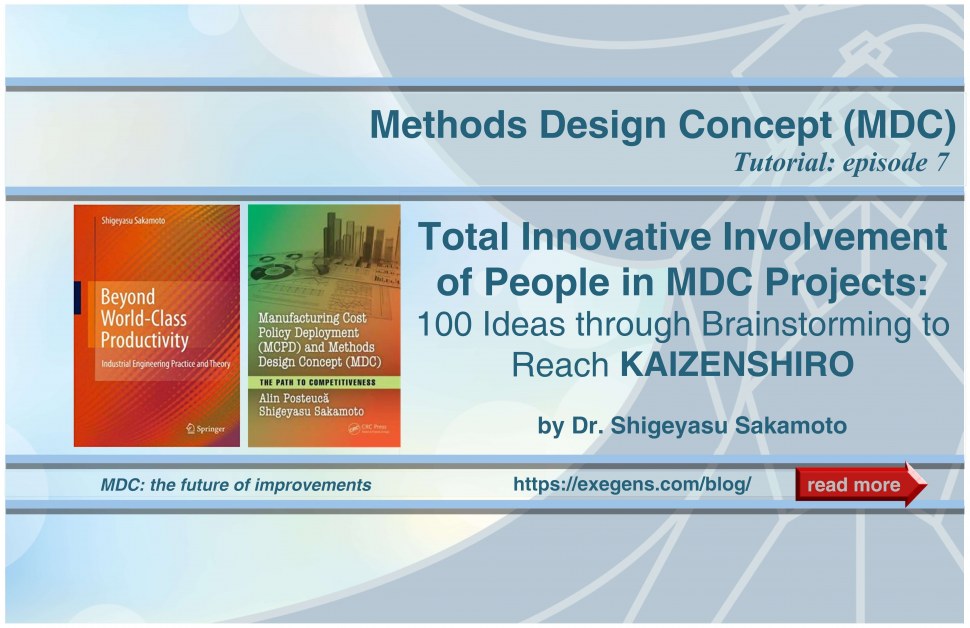The Total Innovative Involvement
Often the total and consistent involvement of people in improvements is a challenge, no matter if it is a systematic or systemic improvement. However, in systemic improvements, as in the case of MDC projects, when a new work method is achieved, an innovative approach to increasing the effectiveness of work, a total catalysis of the people is needed. I will present it in this tutorial.
So, over the years I have sometimes been asked questions like this: How can we get a lot of new unique ideas? What is the practical way to continuously attract people into innovative MDC projects? How does people focus on participating in discovering the 100 new ideas through brainstorming?
The answer to these questions is made up of three major elements of the MDC approach, namely:
- The first is to focus on defining functions, leaving the current methods. Remember that present methods themselves are not problems for designing new methods, the function of present methods should be known. A function has plural methods to meet the function. It means to give opportunity to find different methods compared to present methods, then after to classify functions to BF, basic function and AF, auxiliary function. And remember a few AF follow one BF. There are many examples of AF improvement in the practice of work simplification. BF ratio for total work normally is less than 50 percent on present methods and more than 60 percent on designed new methods, AF is decreased more than 50 to 40 percent.
- The second is setting KAIZENSHIRO for quantitative design target. This is a kind of theoretical improvement target and MDC steps demand simply 100 ideas for BS, brain storming subjects. This means more than several thousand ideas for one work design module. Producing or creating ideas are no limited but a success target of total 100 ideas and KAIZENSHIRO is needed. The first 50 or 80 of 100 Ideas are just simplification of present methods, the only last 10 or 20 ideas are innovative ideas. This is why the brain storming continues until getting precisely 100 numbers of ideas for one BS subject in a module. A reasonable KAIZENSHIRO target leads to unique innovative ideas. BS theme setting is also for steering effective BS. The following figure shows that the attained percent for KAIZENSHIRO in many modules results is around 60 percent.
- The third is precisely following the brain storming method. Poor numbers of ideas are always due to missing orthodox brain storming, just freely discussion or idea finding approach never lead to find innovative ideas. Reasonable BS itself leads to find unique ideas.

How do you actually get people involved in your improvement project to generate unique and innovative ideas?
How do you organize and run brainstorming sessions to generate innovative ideas to achieve productivity and cost targets of direct labor?
References
1. Manufacturing Cost Policy Deployment(MCPD) and Methods Design Concept(MDC), The Path to Competitiveness, Alin Posteuca and Shigeyasu Sakamoto, CRC Press, USA, 2017.
2. Beyond World-Class Productivity, Industrial Engineering Practice and Theory, Shigeyasu Sakamoto, Springer, UK, 2010.
3. Design concept for methods engineering in Maynard Industrial Engineering Handbook, the Fourth ed. Hodson, Shigeyasu Sakamoto, McGraw Hill, 1992.






 English
English Romana
Romana